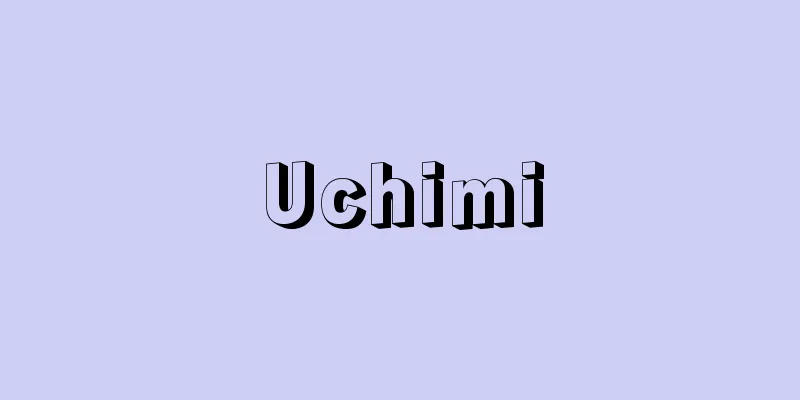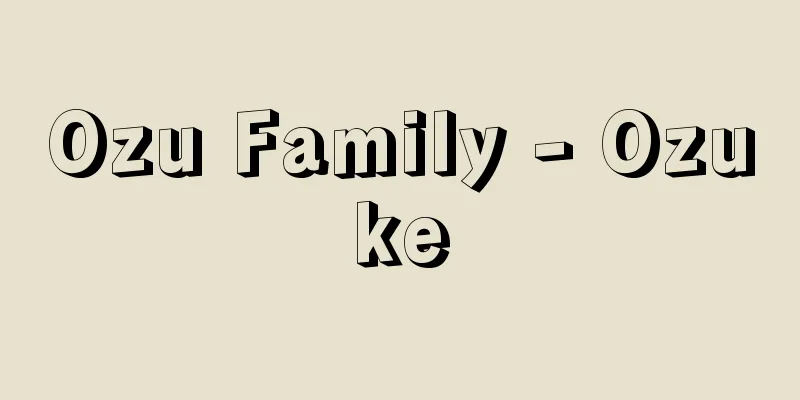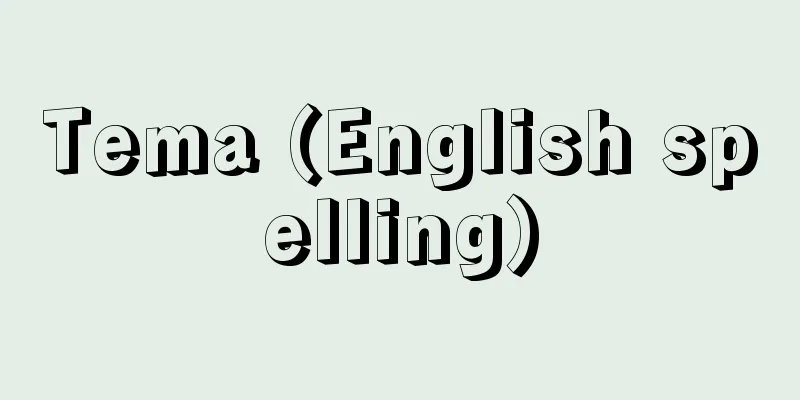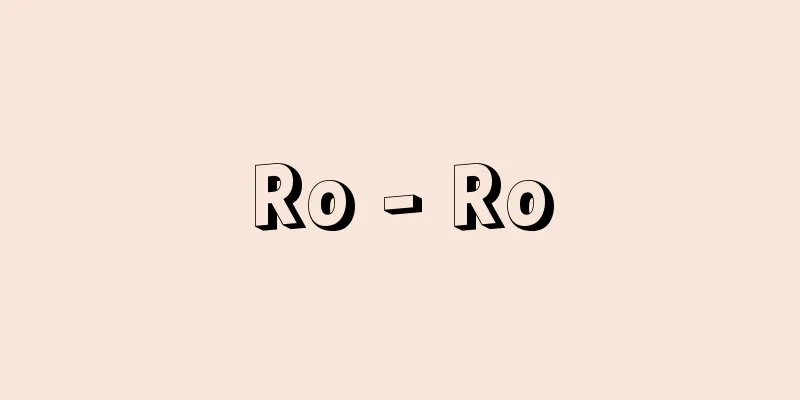Endometriosis

|
What kind of disease is it? ●Main symptoms and progression Endometriosis is a disease in which tissue similar to the mucous membrane inside the uterus (endometrium) grows in various places outside the uterus. The three characteristic symptoms are said to be severe menstrual pain (lower abdominal pain), pain during intercourse, and infertility. Other symptoms include lower back pain, diarrhea, constipation, and pain during bowel movements. If the pain is severe, you may be unable to lead a normal life and end up bedridden. On the other hand, some people have no symptoms at all. ● Causes of the disease and how symptoms developPlaces where tissue proliferation is commonly seen include the space between the rectum and uterus (Douglas pouch), between the bladder and uterus (vesicuterine pouch), as well as the ovaries, fallopian tubes, uterine muscle layer, and pelvic peritoneum.It can also develop in the lungs and rectum. The endometrium peels off at regular intervals due to female hormones, causing menstruation. The abnormally proliferated tissue also peels off at the same cycle as the normal tissue that forms in the endometrium, so bleeding occurs both inside and outside the uterus every time menstruation occurs. This is the cause of the pain. Furthermore, since the blood on the outside of the uterus has no outlet to be discharged, it accumulates there and gradually adheres to the surrounding tissues. In this case, severe pain occurs when defecating, etc. When it develops in the ovaries, the blood turns into brown lumps (cysts) that look like chocolate, so it is called a "chocolate cyst." When it develops in the muscle layer of the uterus, it is called "adenomyosis." ●Characteristics of the disease It is rare around the time of menarche, and occurs in women of menstrual age, excluding pregnant women and postmenopausal women who are not undergoing hormone therapy. It is most common in women in their 30s, and it is said that 25% of couples suffering from infertility are due to endometriosis. A definitive diagnosis cannot be made without directly examining the abdominal cavity with a laparoscope or performing a tissue biopsy, but in most cases a diagnosis is made based on clinical symptoms. EBM checks on common treatments and care [Treatment and care] Pain relief with analgesics [Rating] ☆☆ [Evaluation Points] Although there are no large-scale studies proving its effectiveness, it is the first choice of treatment because it is readily available and inexpensive. (1)(2) This treatment is effective in mild to moderate cases, but it may not be effective in some patients. (3)(4) [Treatment and care] Administer hormone therapy [Rating] ☆☆☆☆☆ [Evaluation points] Hormone therapy uses various hormone drugs to suppress the action of the female hormone (estrogen), which induces menstruation and is closely related to endometriosis, thereby improving symptoms. The hormone drugs used include low-dose birth control pills, dienogest, medium-dose birth control pills, GnRH agonists, and danazol. All of these drugs have been confirmed to reduce pain through highly reliable clinical studies. However, it has also been confirmed that in cases where infertility is also present, hormone drugs do not improve infertility. (1)(5)-(9) [Treatment and care] If hormone therapy is ineffective or cannot be used, surgery may be performed to partially remove the adhesions. [Rating] ☆☆☆☆☆ [Evaluation Points] Surgery is usually performed using a laparoscope to remove diseased areas such as the uterus and ovaries and to remove adhesions. Highly reliable clinical studies have confirmed that this surgery is effective in reducing both pain and infertility, but there are also studies that have shown that infertility is not improved by surgery. (1)(8) In addition, if chocolate cysts are present, they can cause pain, ovarian torsion or rupture, infertility, and the risk of malignancy (for those over 40 years old and over 10 cm), so the surgical procedure should be selected according to the purpose. (10)(11) [Treatment and care] If partial resection is ineffective, surgery to remove the uterus and ovaries may be considered as a definitive procedure. [Rating] ☆☆☆ [Evaluation points] There are clinical studies that show that leaving the ovaries in place during hysterectomy increases the chance of pain recurring, but the evidence is weak. If symptoms are severe and do not improve with hormone therapy or partial resection, or if the patient does not wish to give birth, this is the treatment to be considered as the final step. (12) Checking commonly used drugs with EBM Painkiller [Drug name] Loxonin (loxoprofen sodium hydrate) (4) [Rating] ☆☆ [Drug name] Ibuprofen (4) [Rating] ☆☆ [Drug name] Voltaren (diclofenac sodium) (4) [Rating] ☆☆ [Drug name] Pontal (mefenamic acid) (4) [Rating] ☆☆ [Drug name] Calonal (acetaminophen) (4) [Rating] ☆☆ [Evaluation Points] There are reports that the pain-relieving effect was "no different from that of a placebo (fake drug)" and that "no results were found to show which pain-relieving drug was more effective than the others," and there are no large-scale clinical studies to prove its effectiveness. However, since it is cheap and easy to obtain, and has fewer side effects than hormone therapy, it is recommended in clinical settings as the first choice of treatment before starting hormone therapy. In fact, many women take painkillers before visiting a medical institution or starting hormone therapy. It is said that it is ineffective in about 20% of women. Hormone therapy drugs/low-dose pills (low-dose estrogen-progestin combination drugs) [Medicinal use] Monophasic first generation pill [Drug name] Ortho M-21/Lunabell combination tablet (norethisterone-ethynylestradiol combination drug) (5)(6) [Rating] ☆☆☆☆☆ [Medicinal use] Monophasic fourth-generation pill [Drug name] Yaz combination tablets (drospirenone-ethynylestradiol betadex tablets) (5)(6) [Rating] ☆☆☆☆☆ [Medicinal use] Triphasic first generation pill [Drug name] Ortho 777-21/Synphase T28 (norethisterone-ethynylestradiol combination drug) (5)(6) [Rating] ☆☆☆☆☆ [Medicinal use] Triphasic second-generation pill [Drug name] Tri-Cyclen 21/28/Anju 21/28 (levonorgestrel-ethinyl estradiol combination drug) (5)(6) [Rating] ☆☆☆☆☆ [Medicinal use] Triphasic third-generation pill [Drug name] Marvelon 21/28 (desogestrel/ethinyl estradiol combination drug) [Rating] ☆☆☆☆☆ [Evaluation Points] Low-dose pills are a combination of estrogen and progesterone, and by supplementing these female hormones, they suppress menstruation by putting the body in a similar state to pregnancy. Highly reliable clinical studies have confirmed that they reduce pain. Side effects include nausea and breast tenderness, but they have fewer side effects than hormone therapy with GnRH agonists (described below), and can be used for a long time, so low-dose pills are recommended when painkillers are ineffective or when contraception is desired. Hormonal therapy drug/fourth generation progesterone hormone [drug name] Dienagest (Dienogest) (3) [Rating] ☆☆☆☆☆ [Evaluation points] Dienogest is a synthetic drug called progestin, which is artificially made to resemble progesterone (luteal hormone). It has no male hormone action, and has effects such as suppressing the proliferation of endometrial tissue, suppressing the secretion of gonadotropin-releasing hormone and suppressing ovarian hormone secretion, making it more suitable for treating endometriosis than other progestins. If you want to keep costs down or avoid the risk of bone mineral density loss caused by GnRH agonists (described below), progestins, which have fewer side effects, are recommended. There is also a lower risk of thrombosis, which is a risk with low-dose contraceptives, so progestins are the second most common choice after painkillers for women over 40 years old. Hormone therapy drug/GnRH agonist [drug name] Sprecur (buserelin acetate) (8)(9) [Rating] ☆☆☆☆☆ [Drug name] Nathanil (nafarelin acetate) (8)(9) [Rating] ☆☆☆☆☆ [Drug name] Leuprorelin (leuprorelin acetate) (8)(9) [Rating] ☆☆☆☆☆ [Drug name] Zoladex (goserelin acetate) (8)(9) [Rating] ☆☆☆☆☆ [Evaluation Points] These drugs are called GnRH agonists, and they suppress the action of estrogen from the ovaries by suppressing the follicle-stimulating hormone released from the pituitary gland. In other words, they are drugs that create a state similar to menopause. Highly reliable clinical studies have confirmed that they reduce pain. However, as a side effect, they are likely to cause menopausal symptoms (hot flashes, flushing, sweating, bone loss, insomnia, depression, etc.) caused by a decrease in estrogen. Hormonal therapy drugs/Anti-estrogen drugs [Drug name] Bonzol (Danazol) (8) [Rating] ☆☆☆☆☆ [Evaluation points] Danazol is a drug that suppresses the function of the ovaries and stops menstruation, creating a state similar to that of menopause. It has been confirmed in highly reliable clinical studies that it reduces pain. Side effects include menopausal symptoms (hot flashes, flushing, sweating, stiff shoulders, headaches, mental depression, insomnia, etc.), liver dysfunction, weight gain, edema, acne, and thrombosis. Overall, it is the most reliable treatment method currently available. First, take oral painkillers Endometriosis is a benign disease. If symptoms such as menstrual pain, lower back pain, bowel movements, and pain during intercourse are not severe and are not causing infertility, pain management will be the focus of treatment. Painkillers (non-steroidal anti-inflammatory drugs) will be used and the condition will be monitored. If symptoms are severe even after taking painkillers, take low-dose birth control pills. It is said that 20% of endometriosis patients do not improve their pain with painkillers alone. Taking low-dose birth control pills is recommended as the next choice of medication. If symptoms continue for 3 to 6 months even after taking painkillers and low-dose birth control pills, taking dienogest is recommended, but it cannot be used if there is abnormal bleeding or pregnancy is suspected. Partial surgical removal can lead to recurrence and the need for repeated surgery, but to reduce this risk, if pregnancy is not the intention, it may be necessary to prevent endometriosis from recurring by combining low-dose birth control pills and long-term medications such as dienogest. It has been shown that taking these medications can dramatically reduce the risk of recurrence. (13) Other hormone therapies such as GnRH agonists and danazol are continued while taking into consideration side effects. Side effects include menopausal symptoms (hot flashes, flushing, sweating, stiff shoulders, headaches, depression, insomnia, etc.) and liver dysfunction. If you experience symptoms that seem to be side effects even after starting treatment, it is best to explain the symptoms to your gynecologist and consult with them to decide whether to continue the treatment. Laparoscopic surgery is performed when drug therapy is ineffective or hormone therapy cannot be used. In cases where pain control is difficult with drug therapy (analgesics, low-dose birth control pills, dienogest, other hormone therapy, etc.), or when there are contraindications to hormone therapy or infertility, laparoscopy may be used to remove the lesion, cauterize, or remove adhesions. There is no difference in the effectiveness of lesion resection and cauterization in improving symptoms. (14) For chocolate cysts, cystectomy is thought to be more effective at alleviating pain and has a lower recurrence rate than needle aspiration or cauterization. However, if future pregnancy is considered, it is necessary to consider the risk of reduced ovarian reserve due to damage to normal ovarian tissue. If you do not wish to have children or are approaching menopause, consider an IUD (intrauterine device) or radical surgery. If you do not wish to have children or are approaching menopause, you may consider a levonorgestrel-releasing intrauterine device called an LNG-IUS (Mirena) or radical surgery such as a hysterectomy or oophorectomy, although these are not covered by insurance. (1) (1) Japan Society of Obstetrics and Gynecology, Japan Society of Obstetrics and Gynecology. Obstetrics and Gynecology Clinical Practice Guidelines - Outpatient Gynecology 2014. Japan Society of Obstetrics and Gynecology Secretariat. 2014. Source: "EBM: A book that explains correct treatment" Information about the book "EBM: A book that explains correct treatment" |
|
どんな病気でしょうか? ●おもな症状と経過 子宮内膜症(しきゅうないまくしょう)は、子宮の内側にある粘膜(子宮内膜)と同じような組織が、子宮の内側以外のいろいろな場所で増殖する病気です。 特徴的な3症状は強い月経痛(下腹部痛)、性交痛、不妊といわれています。このほかに、腰痛や下痢、便秘、排便痛などもみられます。痛みが激しい場合は、通常の生活ができず、寝込んでしまうこともあります。反対に、まったく自覚症状のない人もいます。 ●病気の原因や症状がおこってくるしくみ 組織の増殖がよくみられる場所は、直腸と子宮のすき間(ダグラス窩(か))、膀胱(ぼうこう)と子宮の間(膀胱子宮窩)のほか、卵巣(らんそう)、卵管(らんかん)、子宮筋層(しきゅうきんそう)、骨盤腹膜(こつばんふくまく)などです。また、肺や直腸などに発生する場合もあります。 子宮内膜は女性ホルモンによって一定の周期ではがれ、月経をおこします。異常に増殖した組織も、子宮内膜にできる正常な組織と同じ周期ではがれ落ちるため、月経がくるたびに子宮の内側でも、外側でも出血がおこるようになります。これが痛みの原因です。さらに、子宮の外側の血液には排出できる出口がないためそこにたまっていき、徐々に周りの組織と癒着(ゆちゃく)をおこすことになります。この場合、排便時などにひどい痛みを伴います。 卵巣に発症した場合は、血液がチョコレートのような茶色いかたまり(のう胞)になるため、「チョコレートのう胞」と呼ばれます。子宮の筋層内に発症した場合は「子宮腺筋症(しきゅうせんきんしょう)」と呼ばれます。 ●病気の特徴 初潮前後では稀で、妊娠中やホルモン療法をしていない閉経後の女性をのぞく、月経のある年代の女性におこる病気です。30歳代に多くみられ、また、不妊に悩むカップルの原因の25パーセントが子宮内膜症によるものといわれています。 腹腔鏡(ふくくうきょう)にて腹腔内を直接みたり、組織診をしないと確定診断はつかないのですが、多くの場合、臨床症状により診断します。 よく行われている治療とケアをEBMでチェック [治療とケア]鎮痛薬により痛みをやわらげる [評価]☆☆ [評価のポイント] 大規模試験で有効であることを証明した研究はありませんが、手に入りやすく、安価なため、最初に選択される治療です。(1)(2) 軽症から中等度の場合、効果のある治療ですが、効果が乏しい患者さんもいます。(3)(4) [治療とケア]ホルモン療法を行う [評価]☆☆☆☆☆ [評価のポイント] ホルモン療法とは、各種ホルモン薬によって、月経をおこすとともに子宮内膜症とも深い関連のある女性ホルモン(エストロゲン)の働きを抑え症状を改善させる療法です。用いられるホルモン薬には、低用量ピル、ジエノゲスト、中用量ピル、GnRHアゴニスト、ダナゾールなどがあります。いずれの薬も非常に信頼性の高い臨床研究によって、痛みが軽減することが確認されています。ただし、不妊症を合併している場合、不妊はホルモン薬では改善しないことも確認されています。(1)(5)~(9) [治療とケア]ホルモン療法で効果がない、またはホルモン療法が使えない場合、手術で部分切除をしたり癒着をはがす [評価]☆☆☆☆☆ [評価のポイント] 通常は腹腔鏡(ふくくうきょう)によって、子宮や卵巣などの病気の部分を切除したり癒着をはがす手術が行われます。非常に信頼性の高い臨床研究で、この手術は痛みと不妊のどちらにも効果があると確認されていますが、不妊については、手術をしても改善しないという結果を示した研究もあります。(1)(8) また、チョコレートのう胞がある場合、疼痛(とうつう)の原因となったり、卵巣茎捻転(らんそうけいねんてん)や破裂、不妊、悪性化のリスク(40歳以上、10センチ以上)があり、目的に応じて術式を選択します。(10)(11) [治療とケア]部分切除で効果がみられない場合、根治術として子宮や卵巣を摘出する手術を検討する [評価]☆☆☆ [評価のポイント] 子宮を摘出するときに卵巣を残すと痛みの再発が多いという臨床研究がありますが、根拠は弱いものです。症状が強くて、ホルモン療法や部分切除では改善しない場合、さらに出産を希望しない場合、最終的に考慮される治療法といえます。(12) よく使われている薬をEBMでチェック 鎮痛薬 [薬名]ロキソニン(ロキソプロフェンナトリウム水和物)(4) [評価]☆☆ [薬名]ブルフェン(イブプロフェン)(4) [評価]☆☆ [薬名]ボルタレン(ジクロフェナクナトリウム)(4) [評価]☆☆ [薬名]ポンタール(メフェナム酸)(4) [評価]☆☆ [薬名]カロナール(アセトアミノフェン)(4) [評価]☆☆ [評価のポイント] 鎮痛効果は「プラセボ(偽薬)に比べて変わらなかった」という報告と、また、「どの鎮痛薬が他に比べてよりよく効くという結果が出なかった」という報告があり、効果を証明する大規模臨床研究はありません。しかし安価で手に入りやすく、ホルモン療法のような副作用も少ないため、臨床現場ではホルモン療法を始める前に、治療の第一選択として勧められています。実際多くの女性が、医療機関を受診する前やホルモン療法を始める前に鎮痛薬を内服しています。20パーセントほどの女性で効果がないともいわれています。 ホルモン療法薬/低用量ピル(低用量エストロゲン・プロゲスチン配合薬) [薬用途]一相性 第一世代ピル [薬名]オーソM-21/ルナベル配合錠(ノルエチステロン・エチニルエストラジオール複合剤)(5)(6) [評価]☆☆☆☆☆ [薬用途]一相性 第四世代ピル [薬名]ヤーズ配合錠(ドロスピレノン・エチニルエストラジオール ベータデクス錠)(5)(6) [評価]☆☆☆☆☆ [薬用途]三相性 第一世代ピル [薬名]オーソ777-21/シンフェーズT28(ノルエチステロン・エチニルエストラジオール複合剤)(5)(6) [評価]☆☆☆☆☆ [薬用途]三相性 第二世代ピル [薬名]トリキュラー21・28/アンジュ21・28(レボノルゲストレル・エチニルエストラジオール複合剤)(5)(6) [評価]☆☆☆☆☆ [薬用途]三相性 第三世代ピル [薬名]マーベロン21・28(デソゲストレル・エチニルエストラジオール複合剤) [評価]☆☆☆☆☆ [評価のポイント] 低用量ピルは、エストロゲンとプロゲステロンの合剤ですが、これらの女性ホルモンを補充して、体を妊娠中と同じような状態にすることで月経を抑えます。非常に信頼性の高い臨床研究によって、痛みが軽減することが確認されています。副作用としては吐き気や乳房の張りなどがありますが、後述のGnRHアゴニストによるホルモン療法に比べて副作用が少なく、長期使用可能なため、鎮痛薬が効かない場合や、避妊希望の場合、低用量ピルが勧められます。 ホルモン療法薬/第四世代黄体ホルモン [薬名]ディナゲスト(ジエノゲスト)(3) [評価]☆☆☆☆☆ [評価のポイント] ジエノゲストは、プロゲステロン(黄体ホルモン)に似せて人工的に作ったプロゲスチンという合成薬です。男性ホルモン作用はなく、内膜組織の増殖を抑える、性腺(せいせん)刺激ホルモン放出ホルモンの分泌を抑えて卵巣ホルモン分泌を抑制するなどの効果があり、ほかのプロゲスチンよりも内膜症治療に適しています。 コストを抑えたい場合や、後述のGnRHアゴニストによる骨密度減少のリスクを避けたい場合、より副作用の少ないプロゲスチンが勧められます。低用量ピルでリスクのあがる血栓症(けっせんしょう)のリスクも少ないため、40歳以上の場合、鎮痛薬の次に選択しやすい薬です。 ホルモン療法薬/GnRHアゴニスト [薬名]スプレキュア(ブセレリン酢酸塩)(8)(9) [評価]☆☆☆☆☆ [薬名]ナサニール(酢酸ナファレリン)(8)(9) [評価]☆☆☆☆☆ [薬名]リュープリン(リュープロレリン酢酸塩)(8)(9) [評価]☆☆☆☆☆ [薬名]ゾラデックス(ゴセレリン酢酸塩)(8)(9) [評価]☆☆☆☆☆ [評価のポイント] これらの薬はGnRHアゴニストと呼ばれるもので、下垂体からでる卵胞刺激ホルモンを抑えることで卵巣からでるエストロゲンの働きを抑えます。いわば閉経のような状態をつくる薬です。非常に信頼性の高い臨床研究によって、痛みが軽減することが確認されています。ただし、副作用として、エストロゲン低下による更年期障害のような症状(ほてり、のぼせ、発汗、骨量減少、不眠、うつなど)がおこりやすいとしています。 ホルモン療法薬/抗エストロゲン薬 [薬名]ボンゾール(ダナゾール)(8) [評価]☆☆☆☆☆ [評価のポイント] ダナゾールは、卵巣の働きを抑えて月経を止める、やはり閉経のような状態をつくる薬です。非常に信頼性の高い臨床研究で痛みが軽減することが確認されています。副作用としては、更年期障害のような症状(ほてり、のぼせ、発汗、肩こり、頭痛、精神的な憂うつ感や不眠など)や肝機能障害、体重増加、浮腫(ふしゅ)、にきび、血栓症がおこりやすいこともわかっています。 総合的に見て現在もっとも確かな治療法 まずは、鎮痛薬を内服 子宮内膜症は良性の病気です。月経痛や腰痛、排便痛、性交痛などの症状が強くなく、不妊の原因になっていない場合には、疼痛管理が治療の中心となります。鎮痛薬(非ステロイド抗炎症薬)を使用し、経過観察を行います。 鎮痛薬を内服しても症状が強い場合は低用量ピルなどを内服 20パーセントの子宮内膜症患者さんでは鎮痛薬のみで痛みが改善しないといわれています。低用量ピルの内服が次の選択薬として勧められます。鎮痛薬、低用量ピルを内服しても3~6カ月症状が続く場合は、ジエノゲストの内服が勧められますが、異常出血、妊娠が疑われる場合には使えません。 手術による部分切除では、術後再発して手術をくり返すことがありますが、そのリスクを減らすためにも、妊娠を目的としない場合には低用量ピルやジエノゲストなど長期間投与可能な薬剤を組み合わせて、子宮内膜症の再発を予防することが必要でしょう。これらの内服で再発のリスクを劇的に減らせることが示されています。(13) そのほかのホルモン薬療法は副作用を考慮して続ける GnRHアゴニスト、ダナゾールなどのホルモン療法を行います。 副作用として、更年期障害のような症状(ほてり、のぼせ、発汗、肩こり、頭痛、精神的な憂うつ感や不眠など)や肝機能障害がおこることもあります。一度開始した治療でも、副作用と思われる症状が現れたときには、かかっている婦人科医に症状をよく説明して相談のうえ、継続するかどうか決めるとよいでしょう。 薬物療法では効果がない、あるいはホルモン療法が使えない場合は腹腔鏡手術を行う 薬物療法(鎮痛薬、低用量ピル、ジエノゲスト、そのほかのホルモン療法など)では疼痛のコントロールが難しい場合、あるいはホルモン療法に対する禁忌(きんき)がある、不妊があるといった場合には、腹腔鏡により病巣(びょうそう)を切除、焼灼(しょうしゃく)、癒着剥離(ゆちゃくはくり)することがあります。病巣切除術、焼灼術ともに症状を改善する効果に差はないとされています。(14) チョコレートのう胞に対しては、穿刺(せんし)吸引や焼灼術に比較して、のう胞摘出術のほうが疼痛改善効果が高く、再発率も低いと考えられています。ただし、将来の妊娠を視野に入れた場合、正常卵巣組織へのダメージによる卵巣予備能低下の危険性を考慮する必要があります。 出産を希望しない、または閉経が近い場合はIUD(子宮内避妊器具)や根治術も考慮 出産を希望しない場合、または、閉経に近い年齢の場合は、保険適用はありませんが、LNG-IUS(ミレーナ)という、レボノルゲストレル徐放(じょほう)型子宮内避妊器具や、子宮摘出、卵巣摘出といった根治術も考慮します。(1) (1)日本産科婦人科学会, 日本産婦人科医会. 産婦人科診療ガイドライン-婦人科外来編2014. 日本産科婦人科学会事務局. 2014. 出典 法研「EBM 正しい治療がわかる本」EBM 正しい治療がわかる本について 情報 |
>>: Endometritis - Endometritis
Recommend
Stochastic radiation damage
...The occurrence of leukemia and various cancers...
Metallized water
…Below that is a layer of high-pressure liquid hy...
Leland, GA (English spelling)
… The first soccer match in Japan was played in 1...
Kirk Tustabalman - Kirk Tustabalman
...The Kadamba dynasty was surrounded by the Gupt...
Pitch sense - Onkan
〘Noun〙① A term used in Nohgaku. The feeling of sou...
Djeser (English spelling)
The second king of the Third Dynasty of Ancient Eg...
Kleist, K.
…Since language, behavior, and cognition are tool...
Seventy-seventh birthday
This refers to a celebration of the 77th birthday...
démence précoce (English spelling) demenceprecoce
… The concepts that lead to today's schizophr...
failure mode and effect analysis
...At this stage, the following analysis methods ...
Kočiĉ, P. (English) KocicP
...A country that existed in the western Balkan P...
The Emperor of Orii
…Other examples of people who received the honori...
Holy Land - Seichi
A sacred area that has a religious or legendary s...
Omote Myogi
...The mountain has been severely eroded, and the...
Red assassin bug - Red assassin bug
...Their forelimbs are mantis-like trapping limbs...









